Flatey Island and Birds
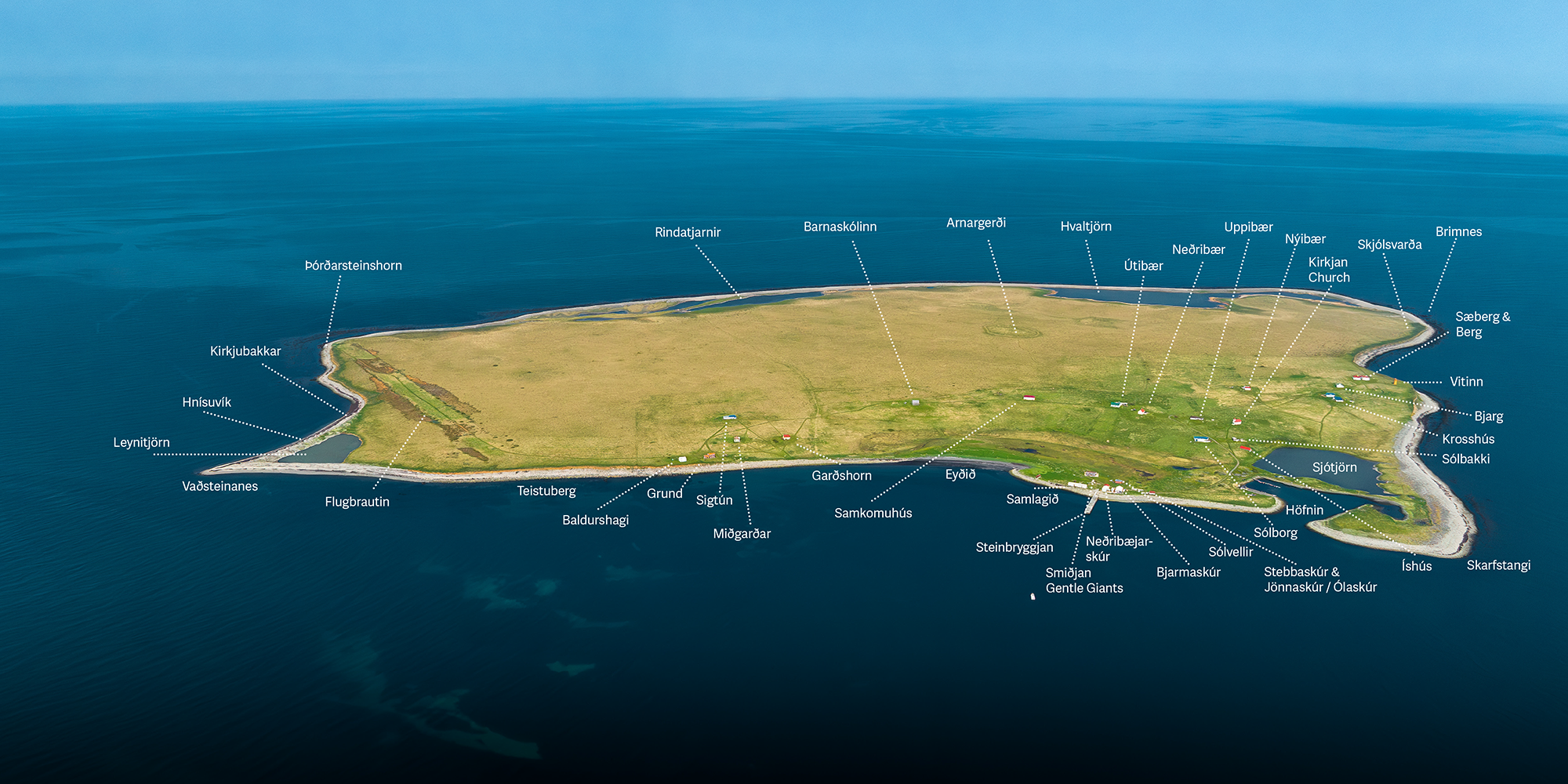
PARADISE OF SKJÁLFANDI BAY
Flatey Island is an island which is located on the north-western part of Skjálfandi Bay, 14,7 nautical miles from Húsavík. The name means "flat island" and the highest peak rises only about 22 m above sea level. With the length of 2,5 km and 1,7 km wide, Flatey Island is the fifth largest island around Icelandic waters.
Flatey Island is a natural haven for birdlife, especially during the summer months when birds arrive in numbers for their nesting season. Incredible 35 out of 76 species can be seen on Flatey Island - the Atlantic Puffin being just one out of many fascinating migratory species.
History
Since the 12th century, Flatey Island was inhabited - mostly by fishermen, farmers and their families. While the number of inhabitants increased especially in the early 20th century, the island never reached a population greater than 120 (in 1942).
Nowadays, the colourful houses found on Flatey Island are mainly inhabited in the summertime by families returning to their roots as well as tourists visiting the local treasure - to enjoy the island's tranquility, its birdlife, or the whales found in the surrounding waters.

Back in the days, living conditions on the island were hard as there was no electricity, heat or running fresh water in the houses – and the island 14,7 nautical miles far from Húsavík. Inhabitants had to collect water from wells, oil lamps and candles were used for light, though later on some houses possessed windmills to produce power.
Winters could be especially difficult on the island, even more during harsh winter storms. People would gather in the community house to get through these tough and dark times together.
Back in the days, the islanders earned their living from fishing, especially from the production of “Saltfískur” (engl. salted fish), which was exported to several countries within Europe. The fishermen went out on rowing boats around the island, where there are highly productive fishing grounds, especially for cod and lumpfish – up to date.
Since the soil on Flatey is very fertile, the inhabitants were able to practise agriculture and most families had some farm animals such as cows, horses, sheep or hens. This way, they managed to be mostly autonomous and hence independent from the villages on the mainland.
Several boats were passing by Flatey to supply the inhabitants with groceries and other necessities, bring and take passengers and other deliveries. These ships were both, large vessels, which circumnavigated Iceland back in the days, but also local boats that were going several times a month between Flatey and Húsavík.
The local community was very active when the population was at its peak. However, it became difficult for Flatey Island to compete with other communities on the mainland that grew faster with increasing access to electricity and hot water in homes. People started leaving the island and moved back to places such as Húsavík. Latest when motorized boats became affordable, living back on the mainland became increasingly attractive – even if having to cross the bay again in order to reach the fishing grounds along the western side of the bay and by Flatey.
The last families left in 1968 (however, no one had spent the preceding winter on Flatey anymore). By then, about 50 inhabitants were still living on the island.





Buildings and Structures
Several structures were built on Flatey Island when the island was permanently inhabited:
- Harbour: In 1930 the first stone bridge was built and some years later, it was both extended and built wider. The pier was mostly used to load or unload boats. When not in use, the boats were moved away (to make space for others at the pier) and anchored or tied on mooring buoys just off the island. Only in 1966 the actual harbour was built, though only small enough boats are able to use it.
- Church: A church was built in the early years but shut down in 1884 after it got damaged in a storm. In 1897 a new church was brought to Flateyjardalur, a valley along the mountains. From then on, the islanders attended church there until the settlement in this valley ceased (1953). In summer 1955, the church was taken apart and six small boats shipped the pieces over to Flatey Island. During the following years the church was re-built and on the 17th of July in 1960, it was reconsecrated. The church is kept up well and today there are still events taking place such as weddings and concerts.
- School: A schoolhouse was built in 1929 (up to then, children had been taught in the living room of the teacher). There was only one teacher on the island and children were divided into two classes, class 1-5 and 6-10. There was also a sports hall as well as a library (which was always kept up to date with new books) in the same building. School activities were traditionally from the 1st of October throughout April as children were helping at home with fishing and farming during the other months of the year.
- Lighthouse: The first lighthouse was built in 1913 and rebuilt in 1963. The lighthouse stands on the highest point on the island, 22 metres above sea level. The lighthouse is still functioning and in use, runs by gas and has backup batteries.
- Community House: The community house was used for formal meetings as well as for celebrations, to simply gather and bring everyone together – especially during the harsh winters. There is a stage for performances inside the house so people could play theatre, music etc.
- Radio telegraph: A radio telegraph was put up in 1931.
- Airport: On the west part of the island was an airport, from north to south. It was 900 metres long and the first airplane landed there on the 29th of October 1955. Over all, it has not been used very often, but from time to time private airplanes landed there. Today, this airport isn’t used as it got destroyed years ago when several trucks tried to save the cargo of a ship that stranded on Flatey.
- Icehouse: An icehouse was built about 10 metres away form Sjótjörn (Sea Pond) by the harbour in 1937. It was used by the islanders as a refrigerator for their food supplies. Every March the ice on the Sjótörn was finally thick enough and the islanders would gather to cut big ice cubes out of the pond. The ice was piled up inside the icehouse and would last for the whole summer and into the next winter – until they could cut ice out of the pond again. The Icehouse was used as a common space. Nowadays, it still serves as a storage room.
Newly renovated (GREEN) VIP house
Today, many buildings have been renovated and are used as summerhouses. Some houses are in very frequent use, but no one lives there all year round. Most of them are owned by relatives or descendants of the former inhabitants. Some are used as guesthouses. In most of the houses generators are used as electricity supplies, some use gas, which is also used for heating up.
Gentle Giants has renovated one of these buildings and today offers a new and beautiful (GREEN) VIP house with a large dining hall and indoor facilities for up to 60 people and WC.
Getting to Flatey
Stefán Guðmundsson, the owner of Gentle Giants, is proud of his strong family connections to Flatey. His grandparents, who had lived their whole life by Skjálfandi Bay, moved to the island and his father was born and brought up there. Apart from the family house where his father grew up, he also has his own private house which has been nicely renovated and is today well used as a second home.
Gentle Giants offers all kinds of private tours from Húsavík to Flatey Island. Ideal for individuals and groups on all occasions, basic or luxury high-end. The company has strong roots to Flatey Island and offers a brand new and environmental friendly building with a large dining hall as well as outdoor BBQ facilities on the island.
Inspired to visit Flatey? Contact us for more information on [email protected] or view our tours page about Flatey.
Birdlife in Flatey
Flatey has a rich fauna, especially during the summer when breeding takes place.
Over 30 species of birds can be seen on Flatey.
| Jóhann Óli Hilmarsson Photos© |
Icelandic |
Latin | English | German |
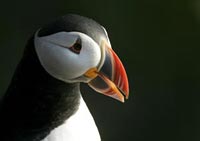 |
Lundi | Fratercula arctica | Atlantic Puffin | Papageitaucher |
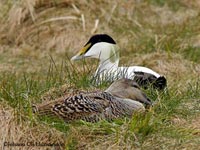 |
Æðarfugl | Somateria mollissima | Common Eider | Eiderente |
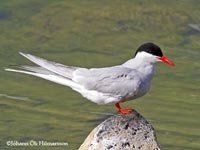 |
Kría | Sterna paradisaea | Arctic Tern | Küstenseeschwalbe |
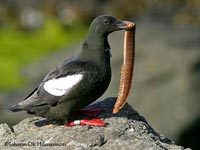 |
Teista | Cepphus grylle | Black Guillemot | Gryllteiste |
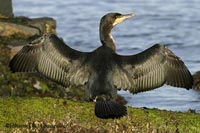 |
Dílaskarfur | Phalacrocorax carbo | Cormorant | Kormoran |
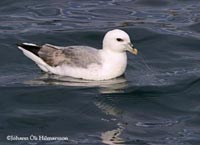 |
Fýll | Fulmarus glacialis | Fulmar | Eissturmvogel |
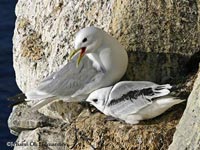 |
Rita | Rissa tridactyla | Kittiwake | Dreizehenmöwe |
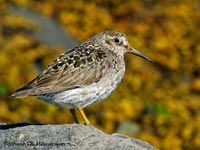 |
Sendlingur | Calidris maritima | Purple Sandpiper | Meerstrandläufer |
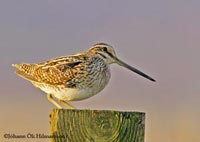 |
Hrossagaukur | Gallinago gallinago | Common Snipe | Bekassine |
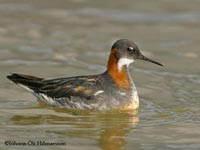 |
Óðinshani | Phalaropus lobatus | Red-necked Phalarope | Odinshühnchen |
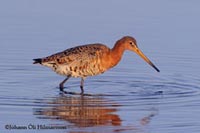 |
Jaðrakan | Limosa limosa | Black-tailed Godwit | Uferschnepfe |
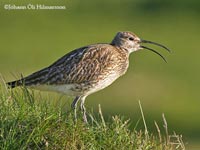 |
Spói | Numenius phaeopus | Whimbrel | Regenbrachvogel |
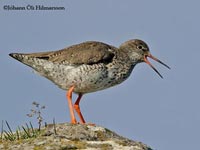 |
Stelkur | Tringa totanus | Redshank | Rotschenkel |
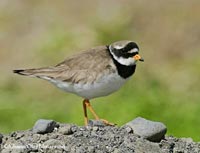 |
Sandlóa | Charadrius hiaticula | Ringed Plover | Sandregenpfeifer |
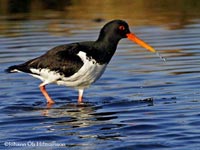 |
Tjaldur | Haematopus ostralegus | Oystercatcher | Austernfischer |
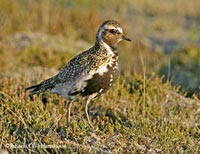 |
Heiðlóa | Pluvialis apricaria | Golden Plover | Goldregenpfeifer |
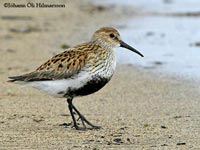 |
Lóuþræll | Calidris alpina | Dunlin | Alpenstrandläufer |
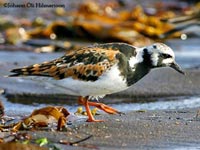 |
Tildra | Arenaria interpres | Turnstone | Steinwälzer |
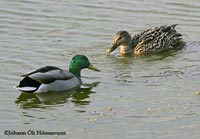 |
Stokkönd | Anas platyrhynchos | Mallard | Stockente |
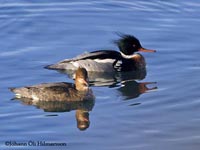 |
Toppönd | Mergus serrator | Red-breasted Merganser | Mittelsäger |
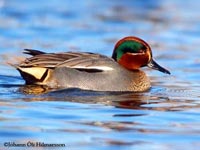 |
Urtönd | Anas crecca | Teal | Krickente |
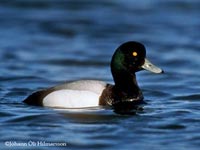 |
Duggönd | Aythya marila | Scaup | Bergente |
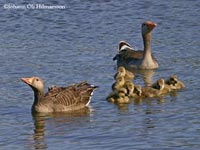 |
Grágæs | Anser anser | Greylag Goose | Graugans |
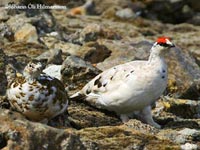 |
Rjúpa | Lagopus mutus | Ptarmigan | Alpenschneehuhn |
 |
Skógarþröstur | Turdus iliacus | Redwing | Rotdrossel |
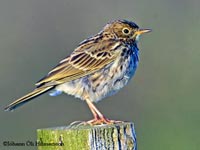 |
Þúfutittlingur | Anthus pratensis | Meadow Pipit | Wiesenpieper |
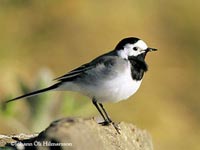 |
Maríuerla | Motacilla alba | White Wagtail | Bachstelze |
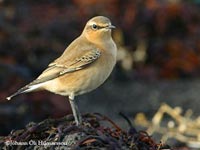 |
Steindepill | Oenanthe oenanthe | Northern Wheatear | Steinschmätzer |
 |
Hettumáfur | Larus ridibundus | Black-headed Gull | Lachmöwe |
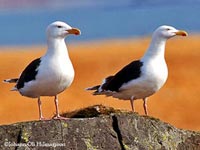 |
Svartbakur | Larus marinus | Great Black-backed Gull | Mantelmöwe |
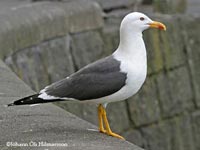 |
Sílamáfur | Larus fuscus | Lesser Black-backed Gull | Heringsmöwe |
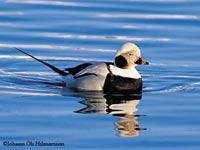 |
Hávella | Clangula hyemalis | Long-tailed Duck | Eisente |
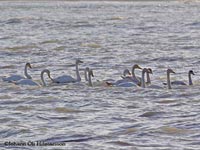 |
Álft | Cygnus cygnus | Whooper Swan | Singschwan |
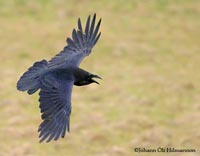 |
Hrafn | Corcus corax | Common Raven | Kolkrabe |
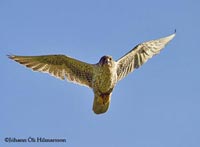 |
Fálki | Falco rusticolus | Gyrfalcon | Gerfalke |


















